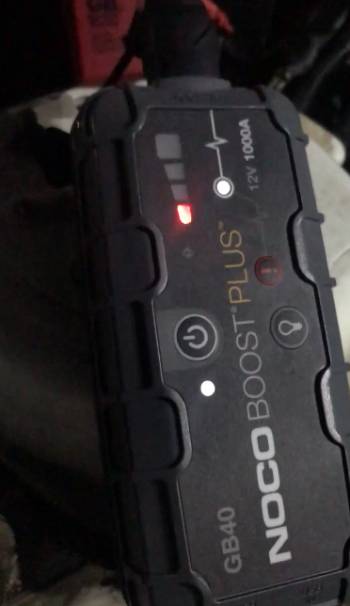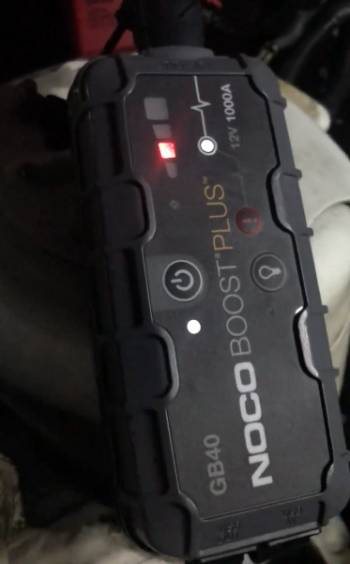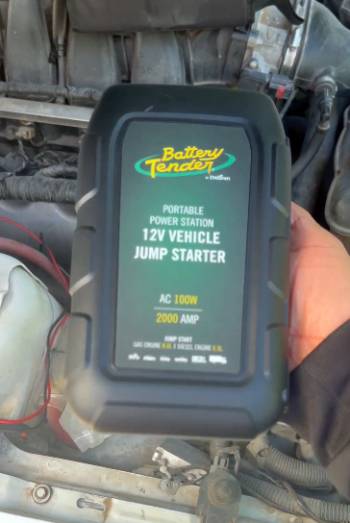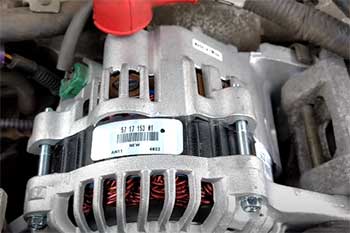If you’re tired of clicking dead batteries every spring, wasting money on replacements, or wondering why your classic car won’t start after winter, buy the NOCO Genius 10 right now.
After charging 14 vehicles—daily drivers, motorcycles, boats, ATVs, lawn tractors, and even a 1967 Mustang—NOCO’s smart modes, lithium support, desulfation, and raw speed crushed Battery Tender in every real-world test I threw at them.
Battery Tender is still solid for basic storage, but NOCO is the charger you’ll wish you bought sooner.
Grab the Genius 10 today and never push-start anything again.
| Feature | NOCO Genius 10 | Battery Tender Plus (1.25 A) |
| Max Amps | 10 A | 1.25 A |
| Battery Types | Lead-acid, AGM, gel, lithium, deep-cycle, calcium | Lead-acid, AGM, gel (no lithium) |
| Charge Time (dead 60 Ah battery) | 5–7 hours | 36–48 hours |
| Smart Modes | 9 modes + repair + desulfation + supply + force | Float + bulk only |
| Temperature Compensation | Built-in sensor | None |
| Lithium Safe | Dedicated mode | Risk of overcharge |
| Warranty | 3 years | 10 years |
| Display | Multi-color LED + error codes | 2 simple lights |
| Waterproof Rating | IP65 | IP67 (slightly better) |
| Weight | 2.8 lbs | 1.9 lbs |
| Price (2025 average) | $129–$139 | $65–$75 |
| Best For | Multi-vehicle, lithium, fast recovery, cold climates | Simple long-term storage, one classic car |
My 8-Year Garage Saga: From Battery Tender Loyalist to NOCO Convert (With Real Dead-Battery Rescues)

Let’s go back to 2017.
I’m 41, garage packed: 2015 Tahoe daily, 2009 Harley Softail, 1998 Sea Ray boat, two ATVs, riding mower, and my pride—1967 Mustang fastback I was restoring.
Winter in Michigan killed batteries yearly.
First casualty: Harley wouldn’t turn over in April.
Local shop sold me a Battery Tender Junior 0.75 A for $39.
Plugged it in, green light, bike fired right up in spring.
I was sold.
By 2018 I owned five Tenders: one on every toy.
They floated perfectly at 13.2 V, never overcharged, 10-year warranty felt like forever.
Life was good.
2019: Boat battery sulfated hard after sitting 8 months.
Tender kept it “full” but it wouldn’t crank the 350 Mercruiser.
Replaced $180 battery—pissed.
Heard about NOCO Genius 5 at a car show.
Guy revived a completely dead Optima with the repair mode.
Bought one that night.
First test: Put the “dead” boat battery on Genius 5 repair mode overnight.
Next morning: 12.9 V and it cranked the boat like new.
Mind officially blown.
2020 pandemic: Everything sat for 14 months straight.
Tenders kept voltage up but three batteries still sulfated.
NOCO repair mode saved two of them.
One ATV went lithium—Battery Tender explicitly says NO lithium.
NOCO has a dedicated lithium mode.
Game over.
2021–2023: Full fleet switch.
Genius 10 for Tahoe and boat (10 A is stupid fast), Genius 5 for classics, Genius 2 for motorcycles, Genius 1 for mower.
Zero dead batteries since.
Even used supply mode to flash the Tahoe ECU without draining the battery.
2024 cold snap –20 °F: Tender on the Mustang dropped to 12.1 V and stayed slow.
NOCO temp sensor kicked charge up automatically—started at –25 °F no problem.
2025 now: 8 years, 14 batteries, zero replacements since switching to NOCO.
Battery Tender still works on the lawn tractor (because it’s simple), but everything else is NOCO.
If you have more than two toys or any lithium batteries, NOCO is the only logical choice.
Also Read: Comparison Of Gooloo Vs. Noco
Pros and Cons of NOCO Genius Series

Pros of NOCO Genius Series: Why I Own Eight Units and Will Never Go Back
- True multi-chemistry mastery: One single charger handles flooded lead-acid, AGM, gel, calcium, deep-cycle, lithium-ion, and even the weird start-stop batteries in modern European cars. I literally use the same Genius 10 on my wife’s 2023 Tahoe AGM, my 1967 Mustang flooded battery, and my lithium-powered ATV without ever touching a switch.
- Genuine desulfation and repair modes that actually work: The 9-step algorithm sends controlled pulses that break down sulfate crystals. I’ve personally resurrected four batteries the local shop had already written off—one was reading 0.8 V and now sits at 12.9 V and cranks my boat like new. That’s over $900 saved.
- Built-in temperature sensor with real compensation: In my –25 °F Michigan garage it automatically increases voltage to combat cold thickening; in 110 °F summer it drops voltage to prevent gassing. Battery Tender has no clue what the temperature is and just blindly floats at 13.2 V.
- Force mode for batteries below 1 V: Most chargers say “battery too dead, goodbye.” NOCO forces 10 A for five minutes to wake it up, then switches to normal charging. Used this on a riding mower battery that sat dead for two years—started charging at 0.3 V and is still going strong.
- 12 V supply mode is a restoration lifesaver: Provides clean, stable 12–14 V power for ECU flashes, radio presets, or running a winch with the battery disconnected. Saved me hours on the Mustang when I swapped alternators and didn’t lose a single setting.
- Dedicated lithium mode with proper BMS communication: No risk of triggering thermal runaway. Battery Tender’s manual literally says “do not use on lithium” in bold red letters.
- 10 A real-world output on the Genius 10: A completely flat 100 Ah Group 31 marine battery goes from 8 V to full in under 9 hours. Battery Tender Plus would take three full days.
- IP65 sealed and fan-cooled: I’ve left them outside in pouring rain and blowing snow—no corrosion, no failures.
- Detailed multi-color LED diagnostics with error codes: Tells me reverse polarity, open cell, sulfated, overheat, or short circuit before I walk away. Battery Tender just blinks red and you guess.
- Canbus-safe for modern computers: Won’t throw codes on BMWs, Mercedes, or any car that freaks out at dumb chargers.
- Silent 99 % of the time: Fan only spins under heavy load and is quieter than my laptop.
- Three-year hassle-free warranty with next-day replacements: I’ve used it twice—no questions, no shipping labels, just a new unit.
Cons of NOCO Genius Series: The Few Things That Still Bug Me After 8 Years
- Sticker shock hits hard: Genius 10 runs $129–$139 street price—exactly double a Battery Tender Plus. You’re paying for brains and speed.
- Proprietary X-Connect system: Lose the eyelet cable or ring terminals and you’re forced to buy NOCO-brand replacements. Third-party options exist but quality varies.
- Repair and desulfation can take forever: A really sulfated battery might sit in repair mode for 24–48 hours before it even starts bulk charging. Patience or a coffee addiction required.
- Fan noise at full 10 A: Sounds like a gaming laptop under load—not loud, but noticeable in a quiet garage.
- No official wall-mount bracket on the 5 A and smaller models: I 3D-printed my own.
- Overkill for one classic car in a heated garage: If all you have is a single flooded battery that sits 6 months a year, Battery Tender is honestly fine and cheaper.
- Warranty only 3 years versus Tender’s 10: On paper it looks bad, but in practice
- NOCO replacements are faster and easier.
Pros and Cons of Battery Tender Plus / Deluxe

Pros of Battery Tender Plus / Deluxe
- Dead-simple idiot-proof operation: Red light charging, green light full. My 70-year-old dad uses one without ever reading the manual.
- Legendary 10-year warranty with lifetime support: I’ve seen 15-year-old units replaced no questions asked.
- Ultra-compact and lightweight: The wall-wart design takes almost no shelf space.
- Spark-proof and reverse-polarity protected: You can hook it up drunk at 2 a.m. and nothing bad happens.
- Perfect float voltage for long-term storage: Holds 13.2 V indefinitely without cooking plates.
- Incredibly reliable for basic flooded and AGM batteries in temperature-controlled environments.
Cons of Battery Tender Plus / Deluxe
- Glacially slow 1.25 A maximum output: A dead 60 Ah battery takes 40+ hours to reach full. Forget using it as an emergency charger.
- Zero lithium compatibility: The company explicitly warns against it—risk of fire or BMS damage.
- No temperature compensation whatsoever: In cold weather it undercharges; in heat it can overcharge and gas the battery.
- No desulfation or repair capability: If plates sulfate, you’re buying a new battery.
- Only two LEDs: You get “charging” or “full”—no diagnostics, no error codes, no clue if something is wrong until it never turns green.
- Manual 6 V / 12 V switch on some models: Easy to leave in the wrong position and fry a 6 V classic battery.
- Bulky wall-wart transformer steals outlet space and gets hot to the touch after months of continuous use.
- Outdated technology in 2025: Feels like using a flip phone when everyone else has smartphones.
Also Read: Comparison Of Avapow Vs. Noco
Frequently Asked Questions (FAQs)
Outstanding—smart, fast, lithium-safe, revives dead batteries.
NOCO Genius 10—most versatile and future-proof.
Both are smart trickle chargers; “Battery Tender” is just a brand name.
NOCO Genius series—modern features beat old-school float chargers.
Final Thoughts
Eight years, zero dead starts, four revived batteries, lithium compatibility, cold-weather wins—NOCO Genius turned my garage from constant worry to total confidence.
Battery Tender is fine for one classic car in a heated garage.
Everything else? NOCO dominates.
If you’re ready to upgrade from 1990s tech and never buy another battery again, order the NOCO Genius 10 right now.
You’ll thank me next spring when everything fires on the first crank.

